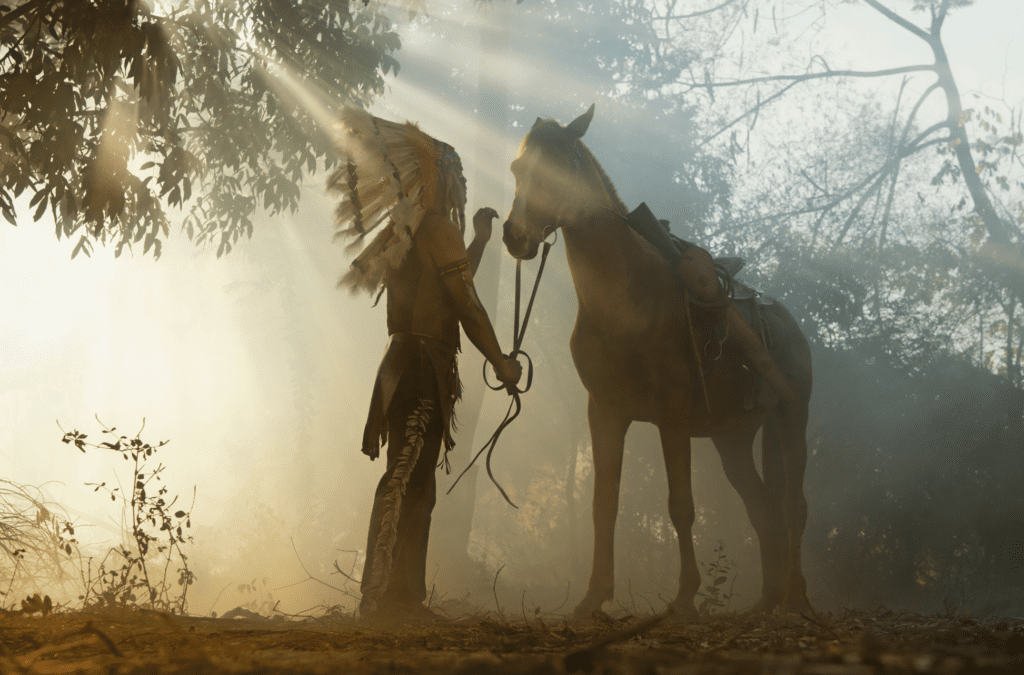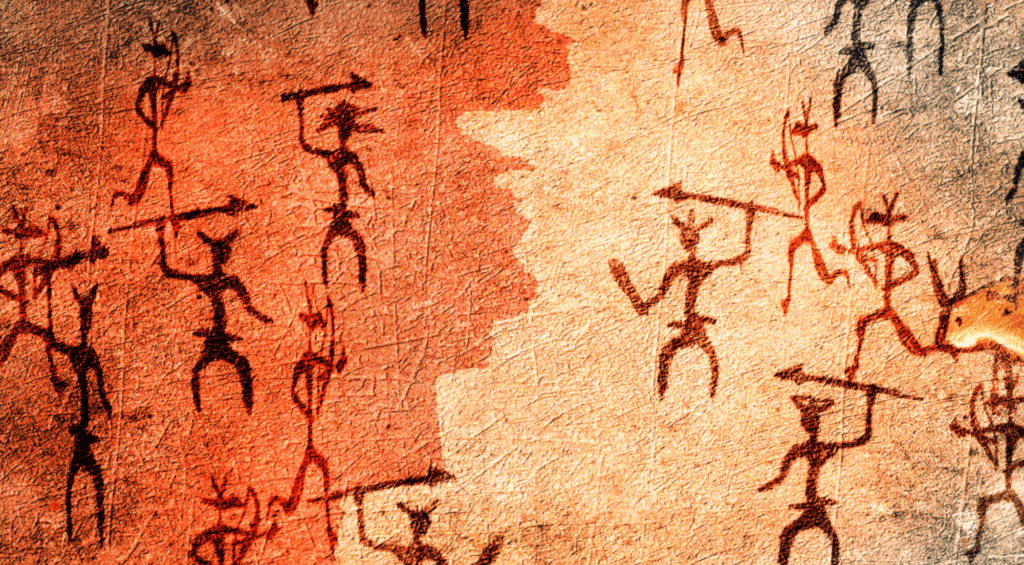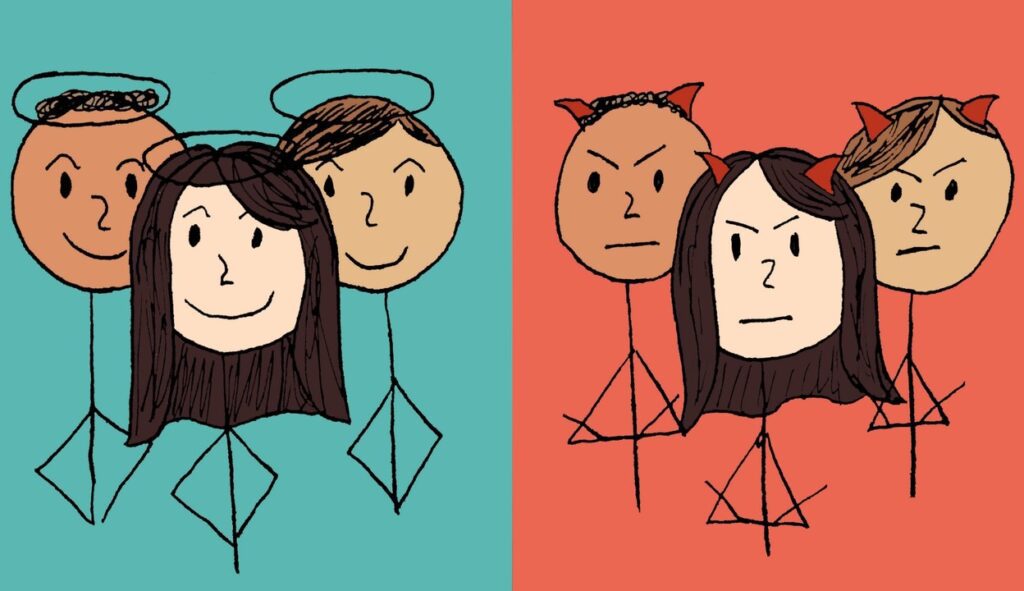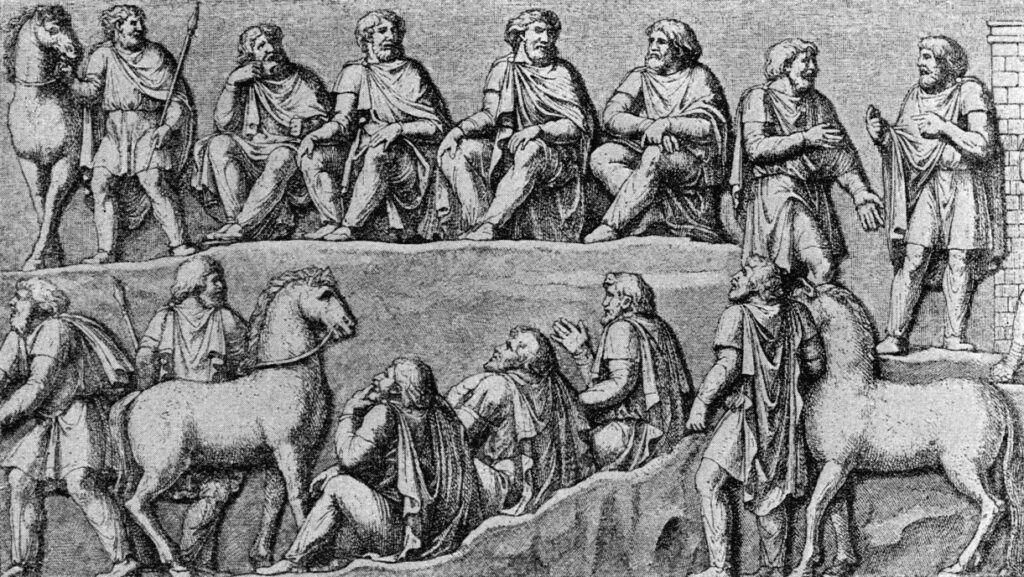
Tribalism has shaped how humans connect, cooperate, and survive for thousands of years. It’s the instinctive pull toward forming groups—a behavior that helped early humans build strong communities, protect resources, and thrive in a challenging world. At the same time, it has fueled rivalries, shaped cultural identities, and played a key role in both conflict and unity. By understanding how tribalism shaped human behavior, we can better grasp how it continues to influence our interactions, choices, and societies today. In this article, you’ll explore the development of tribalism, its influence on our actions, and how we can positively harness its strengths.
“Tribalism will always make your world smaller; universalism is the only way to expand it.”
– Susan Neiman
In today’s world of rugged individualism, tribalism and groupthink are relics of the past. Yet, these concepts remain deeply embedded in our society and can influence us positively and negatively as a community. To understand this dynamic, we can look back at history, which is filled with examples of how tribalism shaped human behavior.
One story that particularly resonates with me is that of Scottish hero William Wallace, famously portrayed by Mel Gibson in the film Braveheart. Braveheart doesn’t just glorify rebellion, it exposes how tribalism can backfire. Even as the Scots fight for freedom, their divisions nearly destroy them.
The film throws us into a world where loyalty to a clan comes before everything. The 13th-century conflict between Scottish clans and the English isn’t just about land or power. It’s a battle fueled by deep-seated tribalism.
While the English play the obvious villain, the film doesn’t shy away from showing how divided the Scots are. Unity doesn’t come easily. It takes a charismatic and courageous Scottish knight named William Wallace to bridge the divide. At first, many Scottish nobles and clans resisted Wallace, preferring to keep their own power rather than fight for a shared cause. Some even choose to side with the English to protect their status.
Wallace’s leadership breaks the cycle of division. He doesn’t come from nobility, yet he convinces clans to fight as one. There’s a pivotal moment where Wallace tells the nobles: “Unite the clans—Scotland is yours.” He doesn’t appeal to patriotism alone. Instead, he forces them to see what they stand to lose.
Tribalism isn’t just a medieval problem—it’s a human one. Braveheart doesn’t just show clashing clans; it reveals how tribalism can be overcome. Wallace’s rebellion succeeds when the Scots rally behind something bigger than their local loyalties.
The story of Braveheart reveals how easy it is to fall into the trap of tribalism and how hard it is to break free. When people cling to group loyalty over the greater good, unity slips away, and opportunities vanish. While nationalism isn’t inherently bad, it pits groups against each other when it turns toxic. The real enemy isn’t “the other side,” it’s the refusal to see past differences.
We move people from fragmentation to togetherness through shared purpose, honest leadership, and courage. These lessons don’t belong only to Scotland’s past—they speak to our choices today.
These days, I see how often we put our groups before what’s right for everyone. If we remember Wallace’s fight, we can start to close those perceived gaps. Next time I find myself picking sides, I’ll ask, am I helping or just holding on to old alliances? We can all do better, one choice at a time.
What is tribalism and how tribalism shaped human behavior?

Tribalism refers to the behavior and attitudes stemming from strong loyalty to one’s social group. Initially, it was used to describe the social structures of indigenous tribes, but its meaning has evolved to encapsulate any form of group loyalty. Tribalism is not just limited to ethnic or familial ties; it can extend to shared interests, beliefs, and even professional affiliations.
Its origins can be traced back to the earliest human societies, where survival depended heavily on forming tight-knit groups. These groups, or tribes, were essential for protecting members from external threats and ensuring the efficient distribution of resources.
Anthropologists and sociologists have long studied how tribalism shaped human behavior. Research suggests that the instinct to form tribes is deeply rooted in our genetic makeup.
Let’s take a closer look at the purpose of tribalism in human beings.
- Tribalism as an evolutionary survival mechanism
Early humans faced constant threats from predators, harsh climates, and the struggle to find food. Alone, survival wasn’t just difficult; it was nearly impossible. Humans have never been the strongest species, but cooperation is our strength. Tribes formed as a way for individuals to band together for safety and mutual dependence.
In these groups, everyone had a role. Some hunted, others gathered food, and many worked together to defend the group against danger. This shared responsibility created a sense of unity, where collective success and the group’s survival were more important than individual gain. Protecting one another and cooperating wasn’t optional. It was the key to staying alive.
Over time, the instinct to align with one another became second nature. We learned to identify with a group and develop deep loyalty to its members. Outsiders were often seen as threats, which helped strengthen internal bonds.
This wasn’t about instinct alone; it was a necessity. Tribalism gave early humans the tools they needed not just to survive, but to thrive in an unforgiving world.
- Formation of kin-based groups
At the heart of early tribalism were kinship ties. These weren’t just family connections, they were the foundation upon which tribes were built. Blood relatives formed the core of these groups, creating a natural sense of trust and obligation. You knew that protecting a cousin, brother, or child meant securing the future survival of your shared genes.
Early tribes were typically small, often consisting of extended families. They were structured in a way that made collaboration natural. Decision-making was usually a collective effort, with elder members offering guidance based on their experience. The bonds in these groups were strong because they were rooted in shared lineage and mutual reliance.
Kin-based groups didn’t just focus on survival. They also passed down knowledge, skills, and traditions. These bonds were so deeply ingrained that they became one of the building blocks for society.
Even today, we see echoes of kinship tribalism in how families stick together, protect each other, and pass down values. It all started here, with small groups who looked out for one another because their survival depended on it.
- Competition and cooperation among early tribes
While early tribalism brought humans together, it also created competition. Tribes relied on limited natural resources, like food, water, and territory that could sustain their group. When resources were scarce, conflicts inevitably arose. Tribes often clashed, fighting to occupy the most fertile areas or control access to crucial supplies.
But it wasn’t all conflict. Cooperation played an equally important role. Tribes occasionally formed alliances, combining their strengths to tackle larger challenges. Perhaps two groups gathered to hunt large prey or defend themselves against a common enemy. These alliances required trust and negotiation, forcing early humans to develop communication and social skills.
The constant interplay between competition and cooperation shaped how tribes related to one another and their surroundings. It also laid the groundwork for more complex social and political systems. Every conflict and alliance taught early humans how to interact in ways that eventually led to larger, more organized societies.
Tribal competition wasn’t just about survival; it drove innovation. Hunting tools, defensive strategies, and even early forms of leadership often arose from the need to outmatch or outsmart rival groups.
In a way, rivalries between tribes were a catalyst for human ingenuity. While conflict drove territorial disputes, cooperation and alliances hinted at something bigger: the seeds of community-building that would define human civilization.
The psychological underpinnings of tribal behavior

Tribalism shaped human behavior throughout history, influencing how we interact, collaborate, and even how we perceive others. It’s no accident that humans have an instinctive pull toward forming groups. This pull didn’t just help us survive; it shaped our psychology, social systems, and sense of belonging.
Let’s break down how tribalism impacts our tendencies toward loyalty, cooperation, and group identity.
- In-group vs. out-group mentalities
Humans have an innate tendency to divide the world into “us” and “them.” This in-group versus out-group mentality has roots in our early reliance on tribes for safety and shared identity. Within a tribe, individuals found trust, support, and a shared sense of purpose. This created a strong bias toward protecting and viewing their own group as superior. At the same time, outsiders were often perceived as threats—unknown factors that could harm or disrupt the group’s stability.
These mental patterns haven’t disappeared. They still play out daily, from personal relationships to broader social dynamics. Think about the way people rally around their hometown sports team or show unwavering loyalty to their chosen political party. It’s the same mechanism: a deep loyalty to the group and a skepticism (or outright hostility) toward anyone perceived as “other.”
This division doesn’t always result in conflict, but it does influence how we build our connections. For example:
- We naturally trust those who share our cultural background or beliefs, as they feel “familiar.”
- Differences, whether cultural, political, or even trivial, can trigger discomfort or mistrust.
- Stereotypes about out-groups act as shortcuts for decision-making, even though they’re often inaccurate.
The in-group/out-group mindset is a double-edged sword. It fosters unity and loyalty within our circles but can also lead to prejudice, exclusion, and misunderstanding of those outside them.
- Social cooperation and altruism
While tribalism can lead to division, it also drives some of the best aspects of human behavior, such as cooperation and altruism. Survival wasn’t an individual effort. It relied on people working together and helping each other. Sharing food, banding together for protection, and caring for the vulnerable were essential for the entire group’s survival.
This sense of responsibility to the group sparked altruistic behavior. Within tribes, people often sacrificed their time, resources, and even their safety, for the greater good. Why? Because the success of the group often means the success of the individual. Our ancestors understood this instinctively.
- Even today, we see echoes of this in the communities around us:
- Families pooling resources to support a member in need.
- Neighbors coming together to help after a natural disaster.
- Teams collaborating in workplaces or competitive environments to achieve a common goal.
Tribal solidarity taught our ancestors that cooperation wasn’t a weakness; it was a strength. That lesson carried into modern societies and continues to shape how we prioritize group welfare over personal gain.
- The psychology of belonging to a tribe
Being part of a group doesn’t just meet physical needs. It satisfies a deep psychological desire. Humans are social creatures, hardwired to seek connection and belonging. For early tribes, being excluded wasn’t just emotionally painful; it could mean death. Over time, the need to belong became tightly tied to our sense of identity and purpose.
Even today, tribalism gives many of us a reason to feel anchored in an otherwise chaotic world. It helps answer questions like, “Who am I?” and “Where do I fit in?” This is why people align so strongly with religious groups, cultural identities, or even hobbies. Belonging offers more than just a sense of community; it provides emotional safety and a framework for understanding the world.
- Modern examples show just how powerful this need for belonging remains:
- Social media communities allow people with niche interests to form global “tribes.”
- Sports fans create lifelong bonds over their shared passion for a team.
- Workplace cultures foster belonging, with employees seeking teams where they feel valued.
The flip side of this is how exclusion or isolation impacts us. Feeling left out of a group triggers stress and even physical pain, showing how deep the psychological connection runs. That’s why belonging isn’t just a social preference; it’s a fundamental human need. From ancient times to now, being part of a tribe has provided us with identity and a sense of purpose that shapes how we view ourselves and others.
Tribalism and conflict: lessons from history

The relationship between tribalism and conflict is a recurring theme in history. Tribalism, with its emphasis on loyalty to one’s own group, can lead to competition, rivalry, and even violence between different groups. Examining historical examples of tribalism and conflict provides valuable lessons for understanding and addressing these dynamics in the present and future.
One of the most well-known examples of tribalism leading to conflict is the Crusades of the 11th and 13th centuries. These religious wars were driven by a sense of tribal loyalty to Christianity and the desire to reclaim the Holy Land from Muslim control.
The Crusades resulted in prolonged periods of violence, suffering, and destruction, with both sides viewing the conflict through the lens of religious and cultural identity. This example highlights how tribalism can lead to intense and protracted conflicts when combined with religious fervor.
Another historical example is the conflict between European settlers and indigenous peoples in the Americas. The arrival of European colonizers led to the displacement, exploitation, and often violent subjugation of indigenous tribes. The tribalism of the settlers, with their sense of superiority and entitlement to the land, clashed with the deep-rooted connection of indigenous peoples to their ancestral territories.
This clash of identities and values resulted in centuries of conflict, loss, and trauma for indigenous communities. It also underscores the destructive impact of tribalism when it is used to justify domination and oppression.
The Rwandan Genocide is another stark example of how tribalism can escalate into extreme violence. The manipulation of tribal identities by political leaders and the deep-seated animosities between Hutus and Tutsis led to one of the most horrific episodes of mass violence in modern history. The genocide serves as a sobering reminder of the potential for tribalism to be exploited for nefarious purposes and the devastating consequences that can ensue.
These historical examples teach us that tribalism can be a powerful force for both unity and division. It can foster strong communal bonds and cultural achievements, but can also lead to exclusion, intolerance, and conflict.
The challenge for contemporary society is to learn from these lessons and find ways to channel tribal instincts towards positive and constructive ends. This involves promoting inclusive identities, fostering empathy and understanding between different groups, and addressing the underlying causes of conflict. By doing so, we can work towards building a more peaceful and cohesive world.
Case studies: historical examples of tribalism in action
Tribalism has shaped human behavior throughout history. Examining historical examples of tribalism in action provides valuable insight into its impact. These case studies highlight both the positive and negative aspects of tribal behavior and its enduring influence on human history.
One notable example are the ancient Greek city-states, like Athens and Sparta. Each city-state, or polis, functioned as an independent political and social entity with a distinct identity and culture. The intense loyalty of citizens to their city-state fostered a strong sense of community and civic duty. This tribalism contributed to Ancient Greece’s remarkable achievements in philosophy, art, and science. However, the rivalry between city-states also led to frequent conflicts, like the Peloponnesian War, which ultimately weakened and divided the Greek world.
Another historical example are the clans of medieval Scotland. Scottish clans were extended family groups that played a central role in the social and political life of the region. Clan loyalty was paramount, and members were expected to support and defend their kin. This tribalism provided a strong sense of identity and solidarity, and clans often engaged in feuds and alliances to protect their interests.
The clan system also contributed to Scotland’s rich cultural heritage, including its traditions, music, and folklore. However, the fierce conflicts and rivalries between clans could be brutal and destructive, leading to periods of instability and violence.
A more recent example is the role of tribalism in the Rwandan Genocide of 1994. The long-standing tensions between the Hutu and Tutsi ethnic groups were exacerbated by colonial policies that favored one group over the other.
These tribal divisions were manipulated by political leaders to incite hatred and violence, resulting in the mass slaughter of an estimated 800,000 Tutsis and moderate Hutus. This tragic event underscores the destructive potential of tribalism when it is exploited for political gain and allowed to escalate into violence.
These historical case studies illustrate the complex and multifaceted nature of tribalism. While tribal loyalty can foster strong communities and cultural achievements, it can also lead to division and conflict. Understanding these dynamics is essential for addressing the challenges of tribalism in the modern world.
Tribalism has shaped human behavior throughout history, influencing everything from social structures and cultural identity to conflict and cooperation. As we move forward, it is essential to understand and address the complexities of tribalism, finding ways to harness its positive aspects while keeping its potentially harmful effects in check. In this way, we’ll create a world filled with peace, love, and mutual respect for the commonalities we share and our differences.
All my best on your journey,
Seline

Questions for you: Can you think of times when you witnessed tribalism? Do you think they were positive or negative manifestations of tribalism, and why? How do you think tribalism shaped human behavior?
Did you like this post? Sign up below, and I’ll send you more awesome posts like this every week.

Tribalism is bad and cannot assist the community or a nation progress.